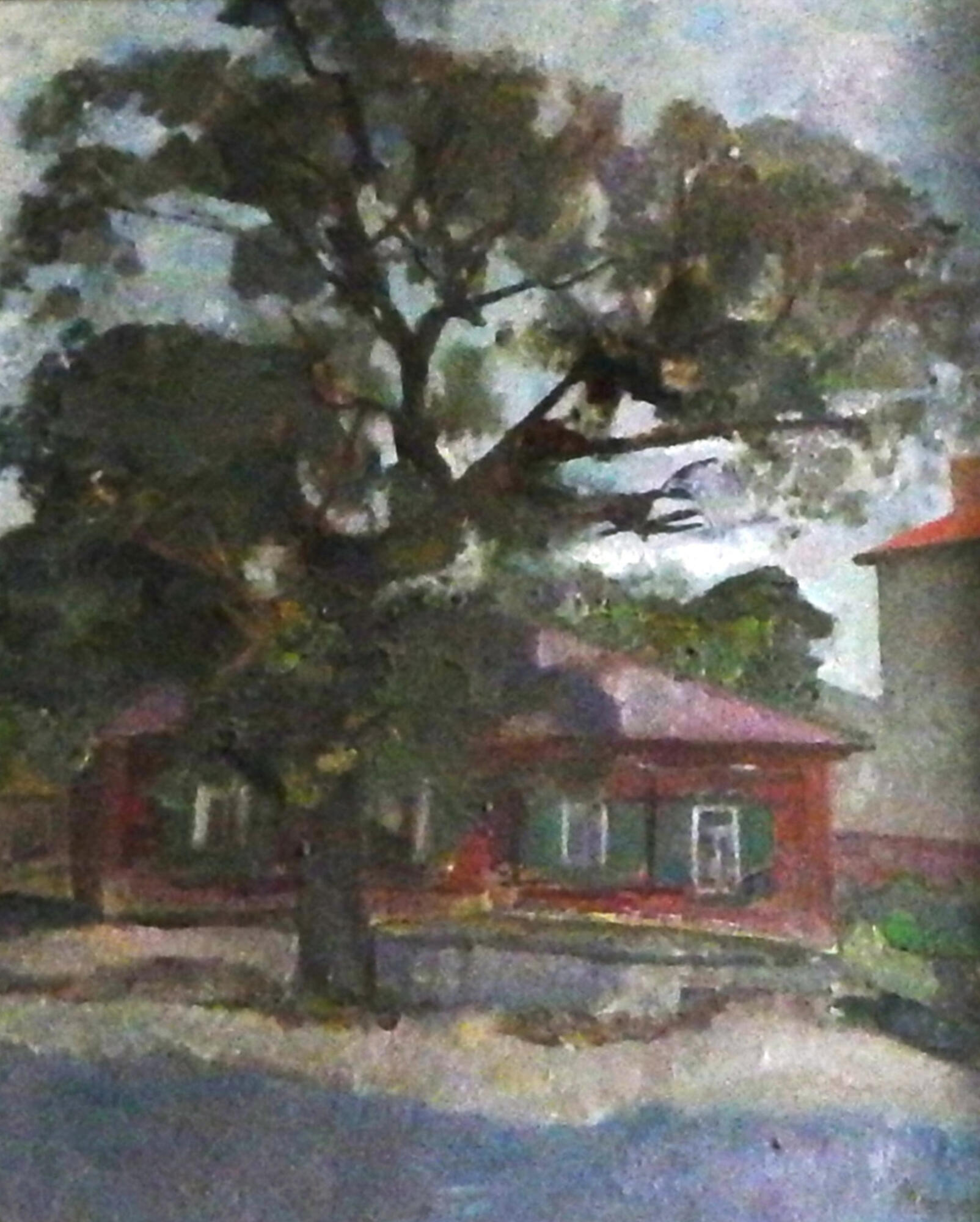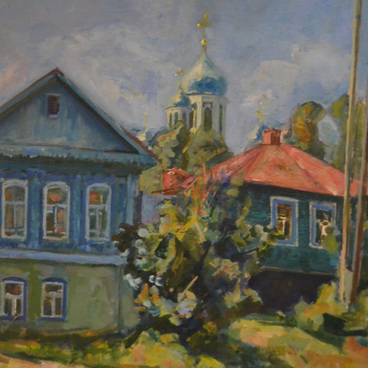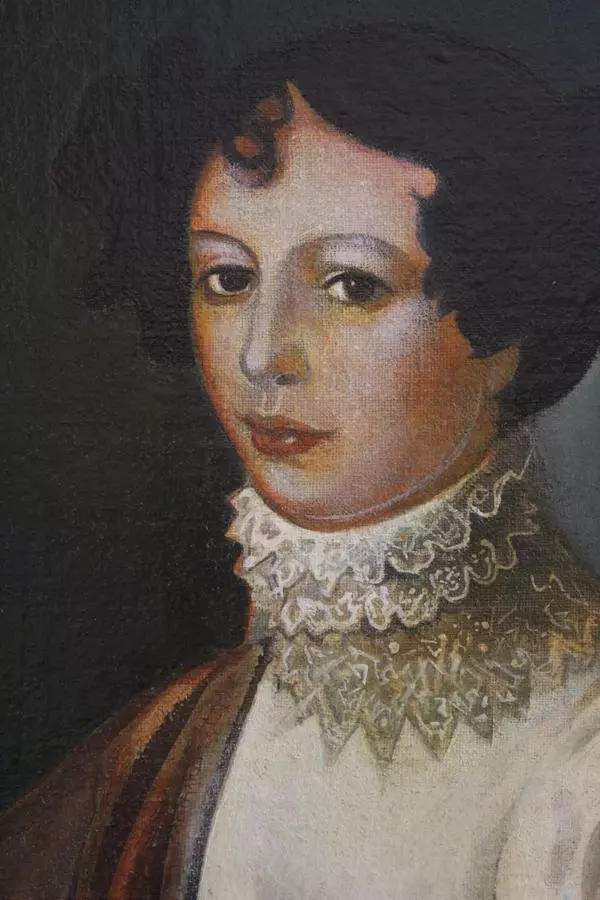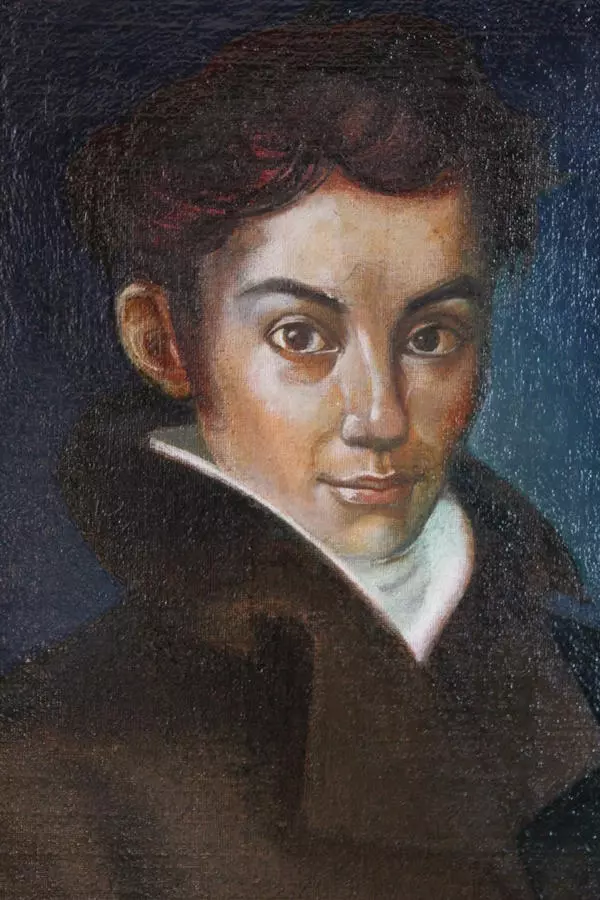The painter Nikolay Klimov was born in 1948 in the village of Budayek, Karaganda region, on the territory of contemporary Kazakhstan. When he was 9, his family moved to Yelets. In 1970, the future painter moved to Moscow to study at an art college in memory of 1905, but then returned to the town of his youth, which became his own town. Here he worked in the workshops of the Art Fund of the RSFSR, and then taught at the Yeletsk College of Arts named after T. N. Khrennikov.
Klimov took part in regional, all-Russian, all-union and international exhibitions. His works are kept in the A. Plastov Museum (Moscow), in the Lipetsk and Yeletsk Local History Museums, the Lipetsk Regional Art Museum, as well as in private collections in Russia and abroad.
Yelets is a special theme in the artist’s work. Art critic Tatiana Nechaeva wrote: “Urban landscapes of Nikolay Klimov are psychological portraits of the place. Only once having seen them, you involuntarily catch yourself thinking that you are looking at the town through the eyes of a painter and that you discover after it its beauty, character, and charm. In the Klimov”s landscapes, there is absolutely no salon-souvenir focus on local sights. These streets, descents and ascents, variegated churches and houses, with multi-colored cheerful facades; these dynamic rhythms, sharp-brittle corners of roofs, walls, fences, branches, tree crowns pierced by the rays of the sun; this is the sky and the distance — a special, inexpressible in words, “Yelets” color… Everything is truthful, lively, personally conveys the spirit of the town’.
In the painting, Klimov depicted the house of the composer Tikhon Khrennikov’s family, long before the building became a museum. Then Staromoskovskaya Street (now Mayakovsky Street) was buried in greenery of gardens — the wide crown of the poplar in front of the house and the tops of trees in the front garden, which are visible from behind the roof, remind of this.
The Khrennikovs' house is an example of Yelets architecture. In the city, one- and two-story small houses of wood and stone were often built. In order to convey the color of the sky in the city, the artist used a special gray-blue tint, which was called “Yelets”. In contrast, he depicted the bright, red-orange facade of the house with green wooden shutters.
The art critic Olga Tulinova noted that “Nikolay Klimov is one of those masters for whom the architectural landscape of the ancient town became one of the main themes of creativity. He sees the image of an ancient Russian town in unity with nature in the shine of light at all seasons. <….> Klimov perfectly feels the specifics of the Yelets urban ensemble, architecture, through which the painter”s striving for a philosophical understanding of the entire landscape is obvious”.
Klimov took part in regional, all-Russian, all-union and international exhibitions. His works are kept in the A. Plastov Museum (Moscow), in the Lipetsk and Yeletsk Local History Museums, the Lipetsk Regional Art Museum, as well as in private collections in Russia and abroad.
Yelets is a special theme in the artist’s work. Art critic Tatiana Nechaeva wrote: “Urban landscapes of Nikolay Klimov are psychological portraits of the place. Only once having seen them, you involuntarily catch yourself thinking that you are looking at the town through the eyes of a painter and that you discover after it its beauty, character, and charm. In the Klimov”s landscapes, there is absolutely no salon-souvenir focus on local sights. These streets, descents and ascents, variegated churches and houses, with multi-colored cheerful facades; these dynamic rhythms, sharp-brittle corners of roofs, walls, fences, branches, tree crowns pierced by the rays of the sun; this is the sky and the distance — a special, inexpressible in words, “Yelets” color… Everything is truthful, lively, personally conveys the spirit of the town’.
In the painting, Klimov depicted the house of the composer Tikhon Khrennikov’s family, long before the building became a museum. Then Staromoskovskaya Street (now Mayakovsky Street) was buried in greenery of gardens — the wide crown of the poplar in front of the house and the tops of trees in the front garden, which are visible from behind the roof, remind of this.
The Khrennikovs' house is an example of Yelets architecture. In the city, one- and two-story small houses of wood and stone were often built. In order to convey the color of the sky in the city, the artist used a special gray-blue tint, which was called “Yelets”. In contrast, he depicted the bright, red-orange facade of the house with green wooden shutters.
The art critic Olga Tulinova noted that “Nikolay Klimov is one of those masters for whom the architectural landscape of the ancient town became one of the main themes of creativity. He sees the image of an ancient Russian town in unity with nature in the shine of light at all seasons. <….> Klimov perfectly feels the specifics of the Yelets urban ensemble, architecture, through which the painter”s striving for a philosophical understanding of the entire landscape is obvious”.






